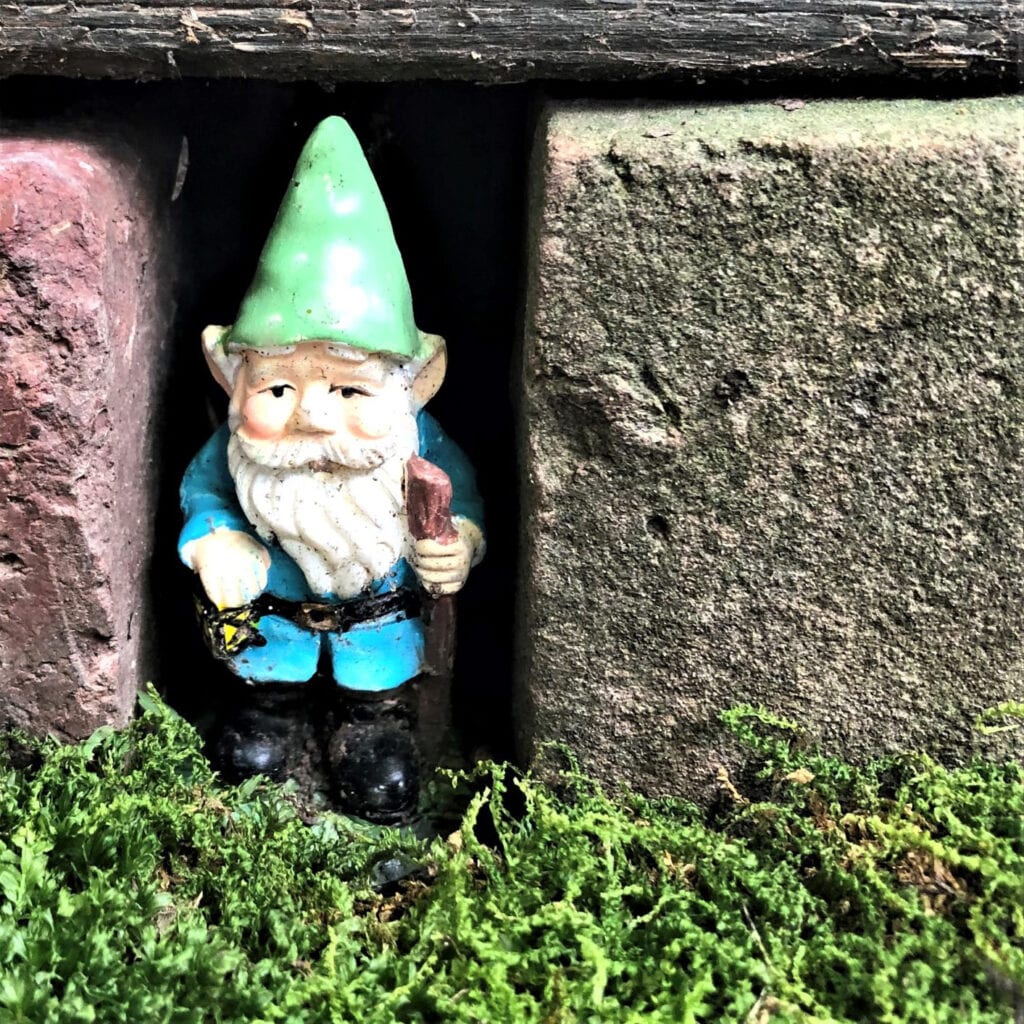First one, then the other! They vanished in the night! Out of our mossy meditation garden, from their tiny grotto under the weathered wooden bridge that leads from the red brick walk into the sloping yard, they just disappeared to who knows where!
Weeks have passed and they still have not been found. We have looked everywhere. Beneath the layers of leaves shed by the mini-magnolias. Between the river stones that line the waterway. Under the umbrellas of the abundant hosta.
The missing ones were both quite small and could have been easily misplaced, but David and I have reassured each other that neither of us moved these two wee ones—guardians of our garden sanctuary of tranquility. What a perplexity!
The first to go, made of delicately carved ivory and standing less than two inches tall, was our little man-boy and his steed, whom I always addressed as “Le Petit Garçon Sous le Pont” (the Little Boy Under the Bridge, since all garden occupants have French names). He was very, very special, for he along with several equally diminutive Buddhas, were wee treasures, Japanese in origin, that had come into our shared life as part of David’s marriage dowry. They are small sculptural objects called netsuke (“net-soo-kei” or “net-skay”).
Netsuke gradually developed in Japan over a period of more than three hundred years and served both functional and aesthetic purposes. They are a distinctively Japanese form of art as described by Giuseppe Piva. Piva, the owner and curator of the Japanese Art Gallery, in Milan, Italy, specializes in antique Japanese artworks and samurai armor equipments. According to Piva, netsuke “derived from Chinese toggles [simply carved button fasteners], and evolved into a specific form of Japanese art. There were excellent carvers in Europe, too. Nothing similar to the netsuke has ever been produced. They were always collector’s items. They were born as a way to suspend items from a sash. [The traditional form of Japanese dress, the kimono, had no pockets.]”
Piva describes how, “Paintings and prints always show simple nesuke in use. During the 19th century sophisticated models were produced, but most of them seem to have rarely been used.”
Piva states “the material used for carving netsuke is not that relevant, though they are generally associated with ivory, as ivory is easy to carve. Wooden netsuke are not less valuable. Nor are those made of harder materials like stag antler [or clay and porcelain].”
In popular culture an extensive essay by Terry Satusuki Milhaupt, found on the “The Met” website, tells of “Netsuke: From Fashion Fobs to Coveted Collectibles”.
Netsuke are a central theme in “The Hare with Amber Eyes”, a 2010 memoir by British ceramic artist Edmund de Waal. The book traces the history of a collection of 264 netsuke—some of them by well-known craftsmen—which were taken to France in the late 19th century and purchased by a wealthy art collector who was a member of the Jewish Ephrussi family. They descended in the family’s Vienna branch, where a family servant kept them hidden during the Holocaust when the Nazis confiscated the family’s other possessions. In 1947, the netsuke were taken back to Japan by an heir who went to live in Tokyo.
With so much history and popularity resting on his shoulders, where can our Petit Garçon possibly have gotten off too?
Sadly, the netsuke’s replacement—one of two tiny, lantern-toting, gaily dressed twin gnomes I found by chance in a dollar store—has now gone missing, too! He had taken up his watchman station and stayed only a few nights before he too was spirited away! By whom? The same thief? A mama squirrel taking our treasure back to the nest as a toy to entertain her spring brood? A raccoon appropriating our watchman to decorate the entrance to the family den?
Unwilling to be bamboozled by nature’s night marauders, David, has installed the second gnome twin, now the third Petit Garçon, beneath the weathered wooden bridge. He is standing upright, his boots securely glued to a long spike driven far into the earth and defying his theft or removal by anyone day or night.
As we wait and watch the drama of the garden guardians continuing at our house, artCentral’s MEMBERSHIP EXHIBITION offers wonderful art drama at Hyde House, 1110 East Thirteenth Street, in Carthage. Weekend Gallery Hours through July 17 are Saturdays and Sundays, 12:00-5:00 p.m. and other times by appointment made at (417) 358-4404.




















